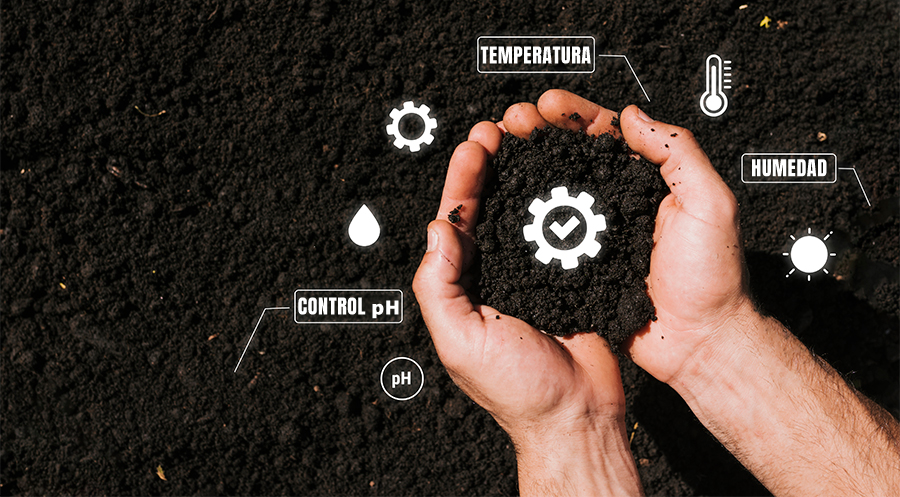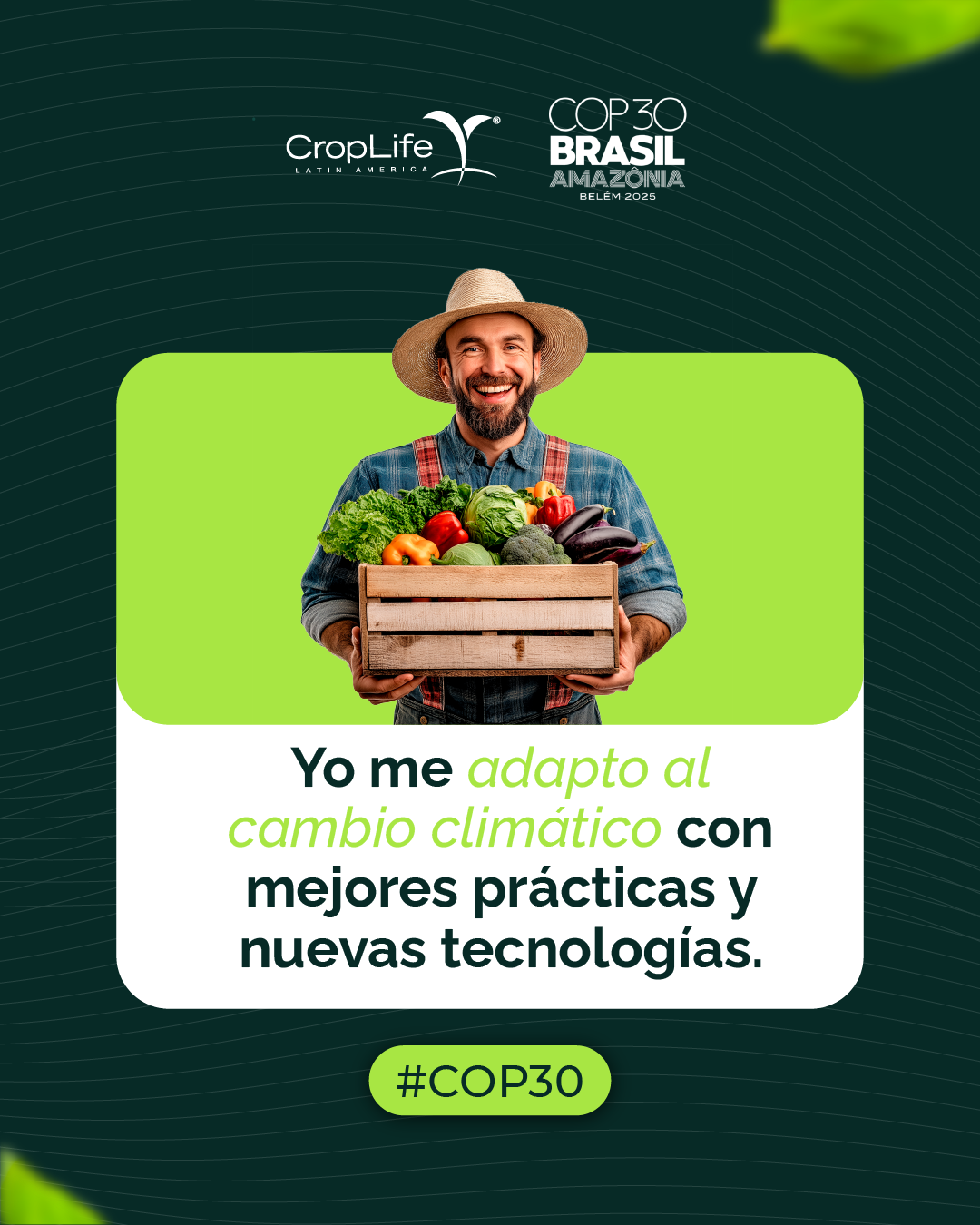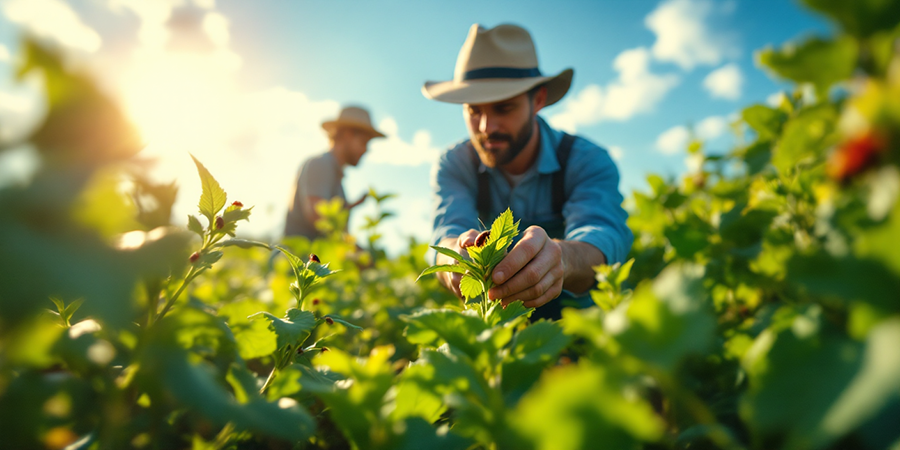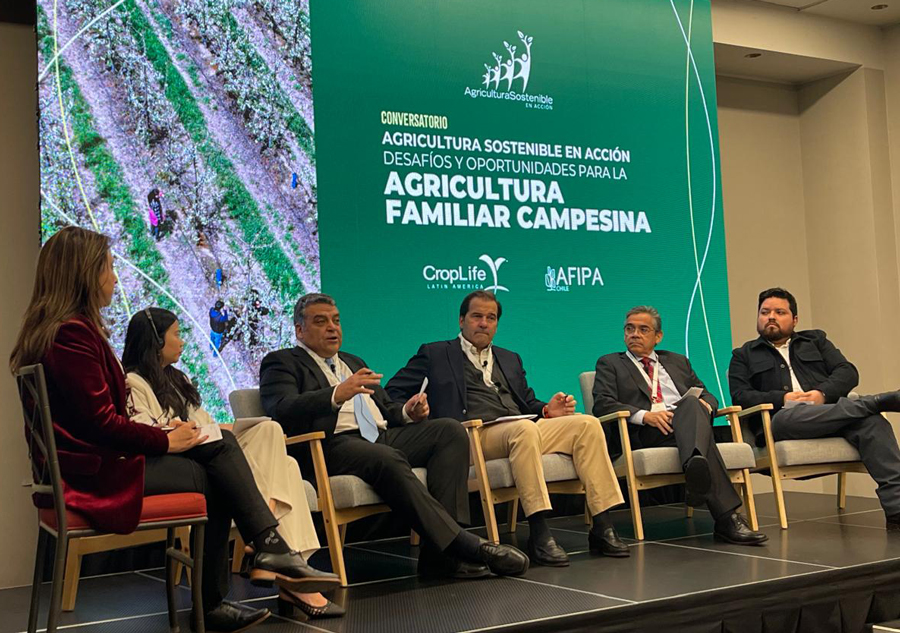October 2025
By: Mauricio Rodríguez, Ph.D.
mrodriguez@croplifela.org
Introduction
In Latin America, agriculture is the backbone of national economies—feeding millions of people and leading exports such as Brazil’s soybeans, Argentina’s corn, and Colombia’s fruits. However, this vital sector faces growing challenges: pests and diseases that threaten yields, increasing cases of resistance to traditional chemical pesticides, and mounting pressure to adopt new technologies.
This is where biopesticides come in—natural solutions derived from plants, microorganisms, and other living organisms that offer an additional way to protect crops. These products are not merely alternatives; they are powerful complements to chemical pesticides, enhancing overall efficacy while minimizing risks to human health and ecosystems.
The urgency to accelerate the adoption of biopesticides is evident. The regional market for these products is projected to grow rapidly—from approximately USD 2.17 billion in 2024 to USD 4.81 billion by 2029.[1]. By integrating biopesticides with chemical pesticides within Integrated Pest Management (IPM) programs, farmers can increase productivity, reduce costs associated with pest resistance, and meet global food residue standards. Biopesticides are eco-friendly tools backed by science, designed to target specific pests with precision. When used in combination with chemical pesticides, they create synergistic effects that enhance control and sustainability. Moreover, overcoming current barriers through policy development, research, and education will be key to accelerating their adoption—ensuring food security and a more sustainable agricultural future for the region.
What Are Biopesticides and Their Role in Modern Agriculture?
Biopesticides are substances derived from natural sources such as bacteria, fungi, viruses, plants, or animals, used to manage pests, diseases, and weeds. Their mode of action is usually specific to certain pests, which helps reduce the risk of unwanted effects on other species.
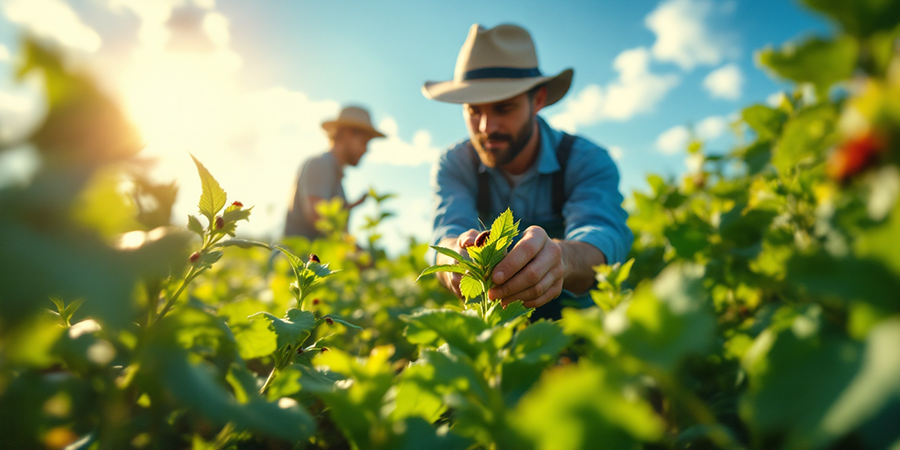
The U.S. Environmental Protection Agency (EPA) classifies biopesticides into three main categories: Microbial pesticides, such as bacteria like Bacillus thuringiensis; Plant-incorporated protectants (PIPs), which are genetically modified crops that produce pest-control compounds; Biochemical pesticides, which include natural substances such as pheromones or plant extracts.
Their advantages are compelling and well supported by science. Many biopesticides decompose quickly in the environment, reducing the accumulation of residues in soil and water. A study published in Plants highlights their low toxicity to humans and wildlife, making them ideal for more sustainable agriculture. For instance, biopesticides generate less hazardous waste and tend to have a milder impact on non-target organisms compared to some synthetic products. In Latin America, where biodiversity is exceptionally rich, endemic microorganisms and plants provide valuable raw materials for the development of innovative biopesticides adapted to regional pest challenges [2].
In Integrated Pest Management (IPM), biopesticides stand out as complementary tools. IPM combines biological, cultural, physical, and chemical methods to optimize the population control of crop-damaging insects. A peer-reviewed analysis published in OJB Sciences shows that integrating biopesticides into IPM delays pest resistance to chemical pesticides and improves crop health over the long term. For example, rotating biopesticides with chemical products helps prevent pests from adapting — a common issue when relying exclusively on chemical control [2].
However, biopesticides are not without challenges. They may act more slowly than chemical pesticides and depend on environmental conditions such as humidity and temperature for optimal effectiveness. Accurate pest identification and proper application are crucial to achieving successful results. Despite these limitations, their specificity is a strength: a fungal biopesticide can target and eliminate only a specific insect pest, protecting bees and other species essential for pollination.
In Latin America, institutions such as the Tropical Agricultural Research and Higher Education Center (CATIE) in Costa Rica are making significant progress in biopesticide research. CATIE’s work in agroecological technologies, including biological control, promotes sustainable practices through applied research and professional training. This scientific foundation underscores why accelerating adoption is vital: biopesticides are not only environmentally friendly but also effective tools for building resilient agriculture.
Market Growth and Current Adoption in Latin America
The biopesticide market in Latin America is booming, driven by the growing demand for alternative products and the need to diversify pest management tools. Recent data estimate the market at USD 1.85 billion in 2025, projected to reach USD 3.53 billion by 2030, with a compound annual growth rate (CAGR) of 13.8%[3]. Brazil leads the region, accounting for over 40% of the market. Bioinsecticide sales reached approximately USD 900 million in 2023/2024, driven by pest outbreaks such as Helicoverpa armigera[4] .
This growth reflects broader regional trends. In Argentina, organic agriculture sales surpassed USD 840 million in 2024, driving the use of biopesticides to meet international export standards[5]. Colombia’s focus on native microbes to control pests such as the potato tuber moth highlights the country’s local innovation and adaptive research capacity [6].
Adoption is growing across key crops. In Brazil’s soybean and sugarcane sectors, more than 50% of producers integrate biopesticides with chemical products, improving yields and sustainability. A study published in Current Plant Biology highlights how this combination effectively controls pest outbreaks, contributing to more resilient and productive farming systems.[7].
However, adoption rates vary. While smallholder farmers face access challenges, initiatives from the Inter-American Institute for Cooperation on Agriculture (IICA) are helping by promoting the use of biopesticides close to harvest, aiming to reduce chemical residues in food products[8]. Peer
reviewed research published in Biological Control shows that biological control programs generate social benefits, including healthier communities and the conservation of biodiversity[9].
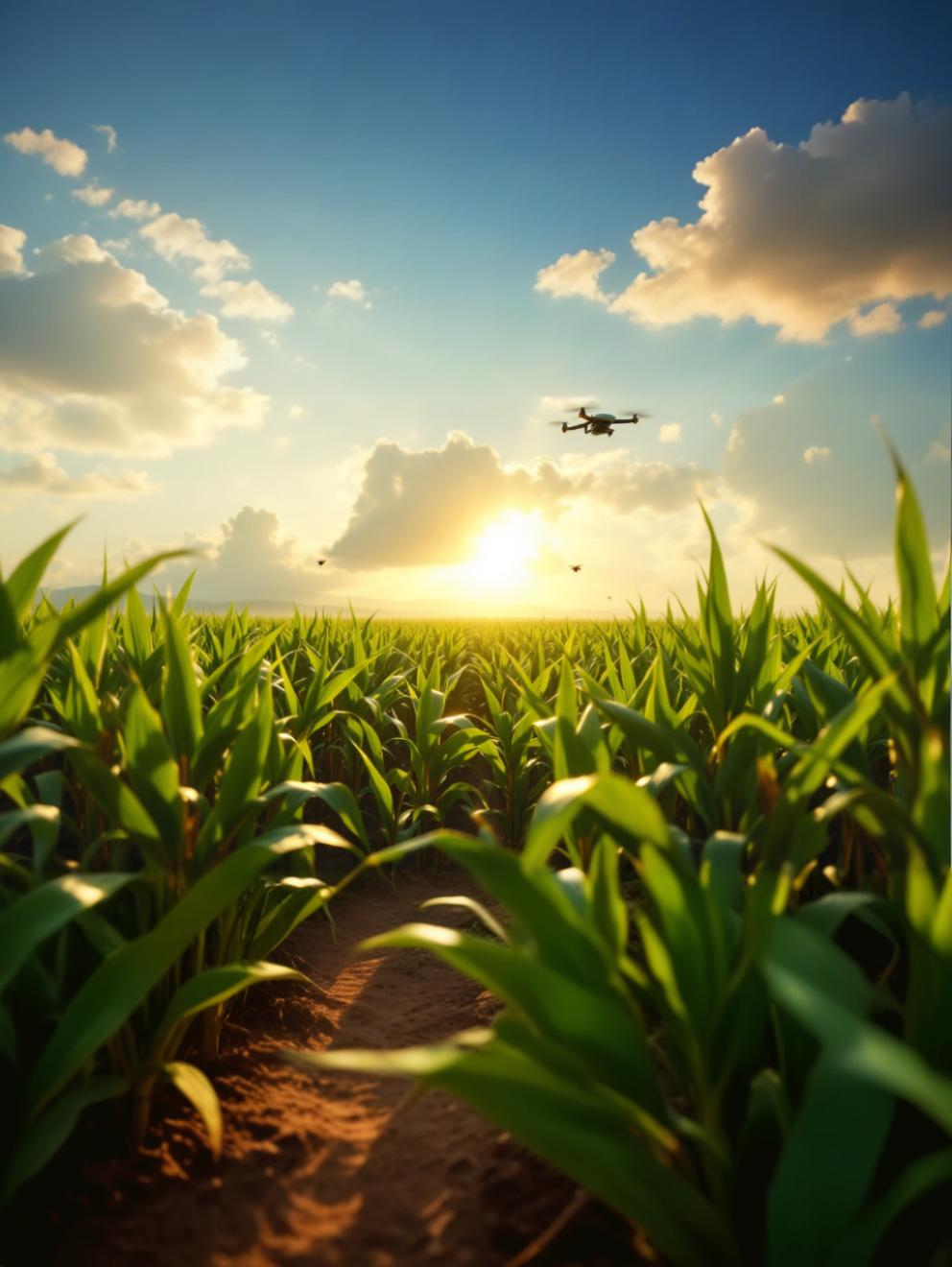 The expansion of the biopesticide market is being driven by regulatory changes and consumer pressure. Each year, more regional events on biopesticides and bio-inputs take place, fostering collaboration and accelerating innovation, led by organizations such as CATIE, AsoBioCol, and the Inter-American Institute for Cooperation on Agriculture (IICA), among others. To sustain this growth, investment in local research and development (R&D) is essential — leveraging the region’s biodiversity to develop solutions suited to specific agroecological contexts. However, achieving this investment depends on clear, coherent, and predictable regulations across Latin American countries. It is also vital to strengthen interinstitutional networks, both governmental and non-governmental, that help build technical capacity within regulatory authorities and stay up to date with rapid innovation advances, while sharing methodologies and data across countries.
The expansion of the biopesticide market is being driven by regulatory changes and consumer pressure. Each year, more regional events on biopesticides and bio-inputs take place, fostering collaboration and accelerating innovation, led by organizations such as CATIE, AsoBioCol, and the Inter-American Institute for Cooperation on Agriculture (IICA), among others. To sustain this growth, investment in local research and development (R&D) is essential — leveraging the region’s biodiversity to develop solutions suited to specific agroecological contexts. However, achieving this investment depends on clear, coherent, and predictable regulations across Latin American countries. It is also vital to strengthen interinstitutional networks, both governmental and non-governmental, that help build technical capacity within regulatory authorities and stay up to date with rapid innovation advances, while sharing methodologies and data across countries.
Effectiveness of Biopesticides Combined with Chemical Pesticides
The greatest benefit of biopesticides emerges when they are integrated with chemical pesticides, creating a robust defense against pests while promoting sustainability. This synergy addresses resistance, a global crisis in which pests develop tolerance to chemical control methods. A peer-reviewed study published in One Health advocates for this shift toward integrated pest management, highlighting multiple examples of improved agricultural productivity achieved by combining chemical and biological control products[10].
In Brazil, the 2013 outbreak of Helicoverpa armigera devastated crops, but the integration of bioinsecticides with chemical pesticides achieved superior control. Farmers used biopesticides based on Bacillus thuringiensis in combination with specific chemical products, which reduced pest outbreaks and minimized excessive chemical use[11]. Multiple studies and field trials confirm the effectiveness of this combination, with biopesticides slowing pest development while chemical products provide rapid control. [12],[13],[14]. The Sustainable Pesticide Management Framework (SPMF) promoted by CropLife encourages holistic approaches and the integrated management of agricultural technologies for pest control. In Latin America, this program is known on social media as #AgriculturaSostenibleEnAccion, featuring projects in Chile, Colombia, and Guatemala [15].
Regulatory Strategy to Overcome Barriers to Biopesticides
Despite their potential, there are still barriers slowing the adoption of biopesticides in Latin America. High costs, limited availability, and complex regulations top the list. Regional experts agree that affordability and supply shortages hinder farmers’ access to these technologies. Regulatory obstacles also delay product approvals, as seen in South America, where regulatory harmonization continues to lag behind[16]. Knowledge gaps also persist; many farmers lack training in the integration of technologies. A study published in CABI Reviews identifies biopesticide availability as a major obstacle to wider adoption [17]. Latin American countries can update their regulatory frameworks, strengthening them through models similar to those of Brazil and Argentina, which could serve as regional benchmarks. Such regulatory convergence would help accelerate investment and foster broader adoption of biopesticides across the region.
By addressing the points outlined here, Latin America could significantly increase biopesticide adoption rates while accelerating the introduction of new chemical technologies, thus enhancing productivity and sustainability. Accelerating the adoption of both biopesticides and modern chemical pesticides in Latin America is essential for achieving productive and sustainable agriculture. This science-based strategy protects crops, environments, and communities, ensuring food security and contributing to a more resilient agricultural future.
[1] Latin America Biopesticide Market Size Report 2024 to 2029. Market Data Forecast, 2024. https://www.marketdataforecast.com/market-reports/latin-america-bio-pesticide-market
[2] Samada, L. H. & Tambunan, U. S. F. (2020). Biopesticides as Promising Alternatives to Chemical Pesticides: A Review of Their Current and Future Status. OnLine Journal of Biological Sciences, 20(2), 66-76. https://doi.org/10.3844/ojbsci.2020.66.76
[3] Latin America Biopesticides Market Size & Share Analysis – Growth Trends & Forecasts (2025 – 2030). Mordor Intelligence, seen October 24th, 2025. https://www.mordorintelligence.com/industry-reports/latin-american-biopesticides-market-industry
[4] The Bioinsecticide Boom: Brazil’s Answer to Corn Pest Challenges. AgNews, Sep. 4, 2024. https://news.agropages.com/News/NewsDetail---51322.htm
[5] Latin America Biopesticides Industry Is Set To Reach XX Million By 2033, Growing At A CAGR Of 12.20. AMR, Jul 20, 2025. https://www.archivemarketresearch.com/reports/latin-america-biopesticides-industry-857639
[6] Suarez-Rubio, Marcela & Suárez, Marco. (2005). The use of the copepod Mesocyclops longisetus as a biological control agent for Aedes aegypti in Cali, Colombia. Journal of the American Mosquito Control Association. 20. 401-4.
[7] Felipe de Lima Andreata M, Mian S, Andrade G, de Freitas Bueno A, Ventura MU, Marcondes de Almeida JE, Fonseca Ivan EA, Mosela M, Simionato AS, Robaina RR, Gonçalves LSA. The current increase and future perspectives of the microbial pesticides market in agriculture: the Brazilian example. Front Microbiol. 2025 Aug 11;16:1574269. doi: 10.3389/fmicb.2025.1574269. PMID: 40862135; PMCID: PMC12375563.
[8] The STDF and IICA launch project to promote reduced pesticide residue in agricultural exports from 12 Latin American and Caribbean countries, and to facilitate international trade. IICA, Feb 23, 2023. https://iica.int/en/press/news/stdf-y-el-iica-lanzan-proyecto-para-promover-en-12-paises-de-america-latina-y-el-2/
[9] Colmenarez, Y.C., Vasquez, C. Benefits associated with the implementation of biological control programmes in Latin America. BioControl 69, 303–320 (2024). https://doi.org/10.1007/s10526-024-10260-7
[10] Cai P, Dimopoulos G. Microbial biopesticides: A one health perspective on benefits and risks. One Health. 2024 Dec 29;20:100962. doi: 10.1016/j.onehlt.2024.100962. PMID: 39867997; PMCID: PMC11762943.
[11] Aline Pomari-Fernandes, Adeney de Freitas Bueno, Daniel Ricardo Sosa-Gómez. Helicoverpa armigera: current status and future perspectives in Brazil. Current Agricultural Science and Technology 21 (2015) 1-7. http://dx.doi.org/10.18539/cast.v21i1.4234
[12] Perini, C. R., Arnemann, J. A., Melo, A. A., Pes, M. P., Valmorbida, I., Beche, M., & Guedes, J. V. C. (2016). How to control Helicoverpa armigera on soybean in Brazil? What we have learned since its detection. African Journal of Agricultural Research, 11(16), 1426-1432.
[13] Malinga LN, Laing MD. Efficacy of Biopesticides in the Management of the Cotton Bollworm, Helicoverpa armigera (Noctuidae), under Field Conditions. Insects. 2022 Jul 27;13(8):673. doi: 10.3390/insects13080673. PMID: 35893028; PMCID: PMC9332838.
[14] Krismawati, A. et al. A bibliometric analysis of biopesticides in corn pest management: Current trends and future prospects. Heliyon, 2024. https://doi.org/10.1016/j.heliyon.2024.e40196
[15] Agricultura sostenible en acción: Autoridades y gremios coinciden en la importancia de aplicar MIP en la Agricultura Familiar Campesina. CropLife Latin America, 2025. https://croplifela.org/es/sostenibilidad-y-desarrollo/agricultura-sostenible-en-accion-autoridades-y-gremios-coinciden-en-la-importancia-de-aplicar-mip-en-la-agricultura-familiar-campesina.
[16] Togni, Pedro & Lagôa, Ana & Sujii, Edison & Venzon, Madelaine & Victor, João. (2023). Biopesticides in South America: Regulation and commercialization. 10.1016/B978-0-323-95290-3.00010-8.
[17] Marrone, Pamela. (2007). Barriers to adoption of biological control agents and biological pesticides. Cab Reviews: Perspectives in Agriculture, Veterinary Science, Nutrition and Natural Resources. 2. 10.1079/PAVSNNR20072051.









